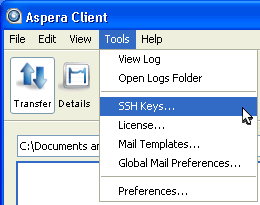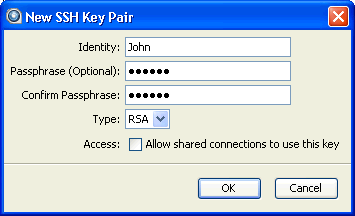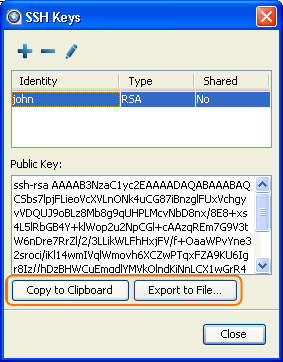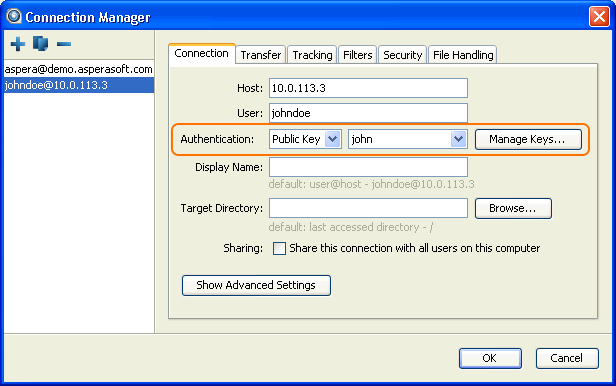Public key authentication (SSH Key) is a more secure alternative to password authentication that allows users to avoid entering or storing a password, or sending it over the network. Public key authentication uses the client computer to generate the key-pair (a public key and a private key). The public key is then provided to the remote computer's administrator to be installed on that machine. If you wish to use your transfer client functionality with public key authentication, follow the steps below.
-
Create a key pair using the GUI
Start the application by launching
and selecting .

In the SSH Keys window, click  to bring up the New SSH Key Pair window.
to bring up the New SSH Key Pair window.
![Click [Add] in the SSH Keys window.](../images/win/pubkey-client.png)
In the New SSH Key Pair window, enter the requested information. When finished, click OK:

| Field |
Description |
| Identity |
Give a name to your key pair, such as your user name. |
| Passphrase |
(Optional) Set a passphrase on your SSH key, which will be prompted for whenever it needs to use the key. If you don't want the user to be prompted for passphrase when logging in, leave this field blank. |
| Type |
Choose between RSA (default) and DSA keys. |
| Access |
When sharing a connection with a public key authentication, or a connection that is used with a Hot Folder, that key should have this option checked. |
-
Distribute the public key
Then, you will need to provide the public key file (e.g. id_rsa.pub) to your server administrator, so that it can be set up for your server connection. To copy or export the public key, select the key in the Public Key Manager window, click Copy Public Key to Clipboard, and paste the string into an email and address it to the server administrator, or click Export to File and save the public key as a file. The instructions for installing the public key on the server can be found in the Setting Up a User's Public Key; however, the server may be installed on an Operating System that is different from the one that your client has been installed on.

-
Set up connections using public key authentication
When your public key has been installed on the remote host by its server administrator, click the Connections to bring up Connection Manager.

Under the Connection tab, select Public Key from the Authentication pull-down menu and select the key that is installed on this host.


![Click [Add] in the SSH Keys window.](../images/win/pubkey-client.png)



